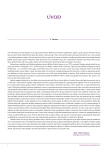Bradycardia in athletes
Authors:
K. Lefflerová
Authors‘ workplace:
Klinika kardiologie IKEM, Praha
Published in:
Kardiol Rev Int Med 2007, 9(Mimořádné): 24-26
Category:
Editorial
Overview
Athletic strain causes a number of functional and morphological changes in the heart which represent physiological mechanisms of adaptation. The ECGs of sporting population often show changes which require correct interpretation in terms of their significance. Asymptomatic sinus arrhythmias, bradycardias, the 1st degree AV block and the 2nd degree intermittent Wenckebach AV block are frequent heart rate disorders and do not normally require any special measures. In the case of the Mobitz 2nd degree AV block and the complete AV block, it is necessary to perform additional cardiac examination (echocardiography, load ECG test, Holter ECG monitoring) and to decide on further steps on an individual basis.
Keywords:
athletic strain – adaptation – sinus arrhythmia – AV transfer disorder
Sources
1. Morganroth J, Maron BJ. The athlete´s heart syndrome. A new perspective. Ann NY Acad Sci 1977; 301: 931-941.
2. Huston TP, Puffer JC, MacMillan Rodney WM. The athletic heart syndrome. N Engl J Med 1985; 313: 24-32.
3. Pelliccia A, Maron BJ, Culasso F et al. Clinical significance of abnormal electrocardiographic patterns in trained athletes. Circulation 2000; 102 (3): 278-284.
4. Latsch J, Predel HG. Herzrhythmmusstörungen im sport. Herz 2004; 29: 420-425.
5. Zehender M, Meinertz T, Keul J, Just H. ECG variants and cardiac arrhythmias in athletes: clinical relevance and prognostic importance. Am Heart J 1990; 119: 1378-1391.
6. Chapman JH. Profound sinus bradycardia in the athletic heart syndrome. J Sports Med Phys Fitness 1982; 22: 45-48.
7. Hiss RG, Lamb LE. Electrocardiographic findings in 122,043 individuals. Circulation 1962; 25: 947-961.
8. Viitasolo MT, Kala R, Eisalo A. Ambulatory electrocardiographic recording in endurance athletes. Br Heart J 1982; 47: 213-220.
9. Hanne-Paparo N, Kellermann JJ. Long-term Holter ECG monitoring of athletes. Med Sci Sports Exerc 1981; 13: 294-298.
10. Balady GJ, Cadigan JB, Ryan TJ. Electrocardiogram in athlete: an analysis of 289 professional football players. Am J Cardiol 1984; 53: 1339-1343.
11. Badeer HS. Cardiovascular adaptation in the trained athlete. In: Lubich T, Venerando A (eds). Sports cardiology. Bologna: Aulo Gaggi 1980: 3-12.
12. Ordway GA, Charles JB, Randall DC et al. Heart rate adaptation to exercise training in cardiac – denervated dogs. J Appl Physiol 1982; 52:1586-1590.
13. Link MS, Olshansky B, Estes NAM. Cardiac arrhythmias and the athletes. Curr Opin Cardiol 1999; 14(1): 24-31.
14. Zipes DP, Ackerman MJ, Estes NA 3rd et al. Task Force 7: arrhythmias. J Am Coll Cardiol 2005; 45(8):1354-1363.
15. Van Ganse W, Versee L, Eylenbosch W et al. The electrocardiogram of athletes: comparison with untrained subjects. Br Heart J 1970; 32:160-164.
16. Zeppilli P, Fenici R, Sassara M et al. Wenckebach second-degree A-V block in top –ranking athletes: an old problem revisited. Am Heart J 1980; 100: 281-294.
17. Táborský M, Kautzner J, Bytešník J et al. Zásady pro implantace kardiostimulátorů, implantabilních kardioverterů- defibrilátorů a srdeční resynchronizační léčbu (2005). Cor Vasa 2005; 47: 59-68.
18. Cooper JP, Fraser AG, Penny WJ. Reversibility and benign recurrence of complete heart block in athletes. Int J Cardiol 1992; 35: 118-120.
Labels
Paediatric cardiology Internal medicine Cardiac surgery CardiologyArticle was published in
Cardiology Review

2007 Issue Mimořádné
Most read in this issue
- Practical issues in differentiating athlete’s heart from hypertrophic cardiomyopathy
- Bradycardia in athletes
- Physiology of physical strain
- Doing sport with an implantable pacemaker or cardioverter/defibrillator
